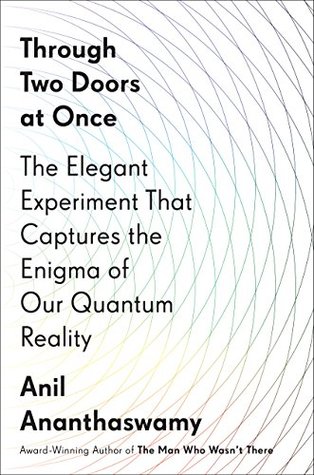More on this book
Community
Kindle Notes & Highlights
Read between
August 25 - September 14, 2020
So what did they have to do to ensure that the testbed was stable and free of noise? “Everything, literally everything,” Ma told me. “Even the breath of a human being or a stamp of the feet in the lab will . . . [destroy] the interference.”
This intricate version of the double-slit experiment combines all the mysterious aspects of quantum mechanics: randomness, wave-particle duality, and even entanglement.
“It looks strange and it looks strange and it looks very strange, and then it suddenly doesn’t look strange at all and you can’t understand what made it look strange in the first place.” For a younger generation raised on the mysteries of quantum mechanics, the strangeness may be passé.
Wheeler’s own words are a salve: “The final story of the relation between the quantum and the universe is unfinished business. We can well believe that we will first understand how simple the universe is when we will recognize how strange it is.”
Using the laws of thermodynamics to make his point, he argued that the reason why we have to deal with probabilities of outcomes in thermodynamics is because we don’t have complete knowledge of the properties of, say, the underlying molecules of some gas.
Speakable and Unspeakable in Quantum Mechanics by John Bell,
As Bell subsequently said, Bohm had done the impossible.
It was galling to Bush that human observers could somehow be held responsible for creating quantum reality. It still galls him. “This is the latest in the long line of epic human intellectual follies that have resulted from man putting himself at the center of the universe,” he said when we met at his office at MIT. “It strikes me as nonsense.”
Each strong measurement that tries to find out the location of a particle gives the particle such a kick that it no longer goes where it would have gone had there been no measurement. There’s really no way to measure trajectories of particles using strong measurements without altering them.
Photons are massless particles that move at the speed of light and so are relativistic.
“To a lot of people, the standard interpretation of quantum mechanics, which is very mathematical and abstract, gives up determinism, and they don’t understand why you would give it up if you don’t have to,” said Steinberg. “They say that it’s such an important philosophical assumption that if you showed me that it was in contradiction to reality, I’d give it up, but otherwise I’ll bend over backwards to keep it.”
“The collapse [of the wavefunction] . . . is such an ugly scar on quantum theory, that I, along with many others, am ready to . . . deny its existence. The price is the many-worlds interpretation (MWI), i.e., the existence of numerous parallel worlds.”
Take, for instance, Bohr’s language that’s used to describe the double-slit experiment: if we don’t collect which-way information, the photon behaves like a wave; if we do, it behaves like a particle. “All that is complete nonsense,” said Carroll.
“If you don’t entangle the photon as it moves through the slits, then you’ll see the interference pattern, because that’s the solution of the Schrödinger equation,” said Carroll.
“You know what I would do when I was young, being dismissed by the old professors on the front rows of the seminar? I would not look to them as I spoke, but rather to the back rows where the young students were sitting. They were the ones ready to hear something new.”
“The est foundation’s physics conferences attracted star after star of the physics firmament,” wrote David Kaiser in his book How the Hippies Saved Physics: Science, Counterculture, and the Quantum Revival.
“They were spouting all sorts of philosophical verbiage, academic style philosophical verbiage . . . which it was clear that Feynman had no patience with and he took them apart. It was cruel. I don’t know how to describe what he did to them. With simple words, he took a pin and punctured their balloon in a way that you might call ugly, but the saving grace is that they were totally enchanted by him,” Susskind told me.
But despite his distaste for bloviating philosophers, Feynman “was possibly the most philosophical of all the physicists I ever knew,” said Susskind.
“In order to get new theories, these two things are very far from equivalent. Because one gives a man different ideas than the other,” said Feynman.
“And every theoretical physicist that’s any good knows six or seven different theoretical representations for exactly the same physics and knows that they are all equivalent and that nobody is ever going to be able to decide which one is right at that level . . . but he keeps them in his head, hoping that they’ll give him different ideas.”
As Feynman put it in his Cornell lecture: “Any . . . situation in quantum mechanics, it turns out, can always be explained afterwards by saying ‘You remember the case of the experiment with the two holes?’”
Physics has yet to complete its passage through the double-slit experiment. The case remains unsolved.


